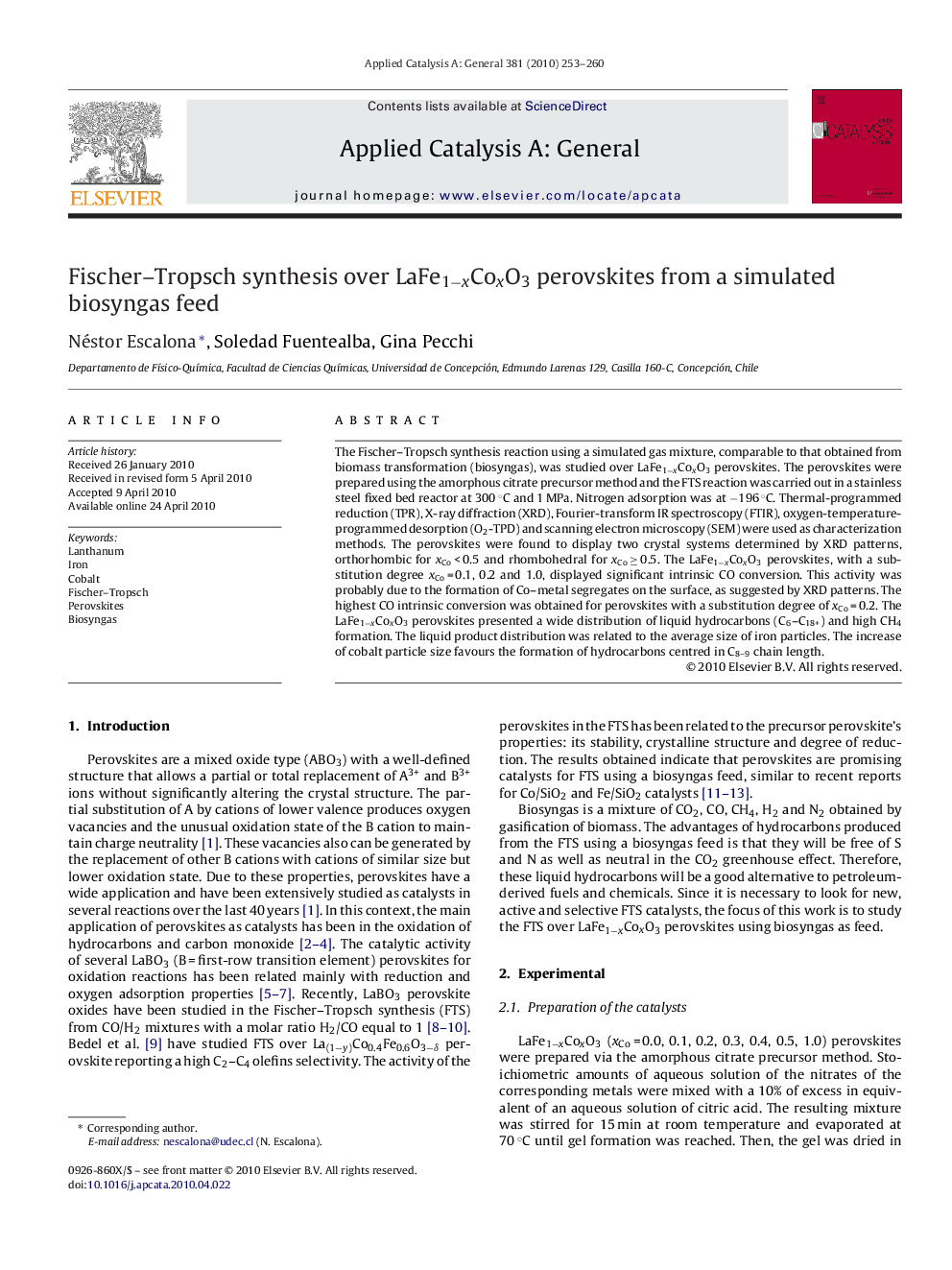| Article ID | Journal | Published Year | Pages | File Type |
|---|---|---|---|---|
| 42050 | Applied Catalysis A: General | 2010 | 8 Pages |
The Fischer–Tropsch synthesis reaction using a simulated gas mixture, comparable to that obtained from biomass transformation (biosyngas), was studied over LaFe1−xCoxO3 perovskites. The perovskites were prepared using the amorphous citrate precursor method and the FTS reaction was carried out in a stainless steel fixed bed reactor at 300 °C and 1 MPa. Nitrogen adsorption was at −196 °C. Thermal-programmed reduction (TPR), X-ray diffraction (XRD), Fourier-transform IR spectroscopy (FTIR), oxygen-temperature-programmed desorption (O2-TPD) and scanning electron microscopy (SEM) were used as characterization methods. The perovskites were found to display two crystal systems determined by XRD patterns, orthorhombic for xCo < 0.5 and rhombohedral for xCo ≥ 0.5. The LaFe1−xCoxO3 perovskites, with a substitution degree xCo = 0.1, 0.2 and 1.0, displayed significant intrinsic CO conversion. This activity was probably due to the formation of Co–metal segregates on the surface, as suggested by XRD patterns. The highest CO intrinsic conversion was obtained for perovskites with a substitution degree of xCo = 0.2. The LaFe1−xCoxO3 perovskites presented a wide distribution of liquid hydrocarbons (C6–C18+) and high CH4 formation. The liquid product distribution was related to the average size of iron particles. The increase of cobalt particle size favours the formation of hydrocarbons centred in C8–9 chain length.
Graphical abstractFischer–Tropsch reaction using a mixture similar to that obtained from biomass transformation has been studied over LaFe1−xCoxO3 perovskites. The CO conversion over LaFe1−xCoxO3 perovskites is mainly determined by the dispersion of Co segregates species. A higher metal Co segregates particle decreases the production of hydrocarbon chain C14+ and promotes the synthesis of smaller hydrocarbon chain lengths (C8–C9).Figure optionsDownload full-size imageDownload high-quality image (72 K)Download as PowerPoint slide
